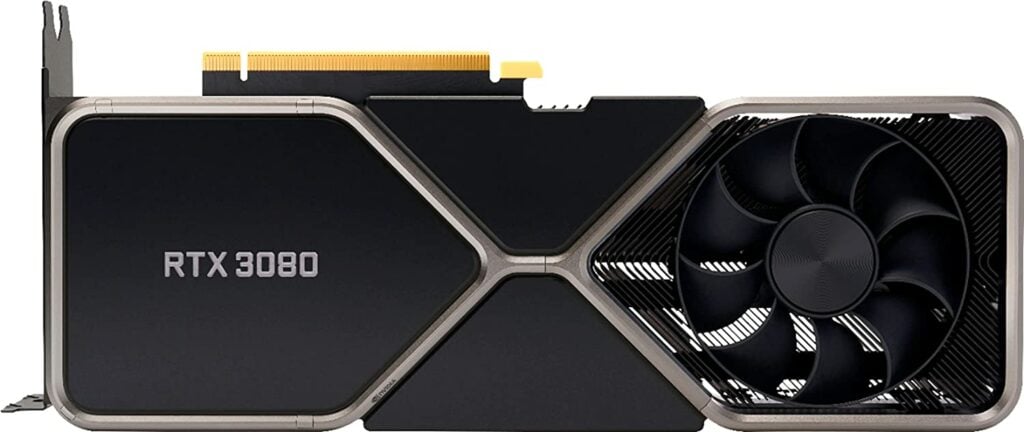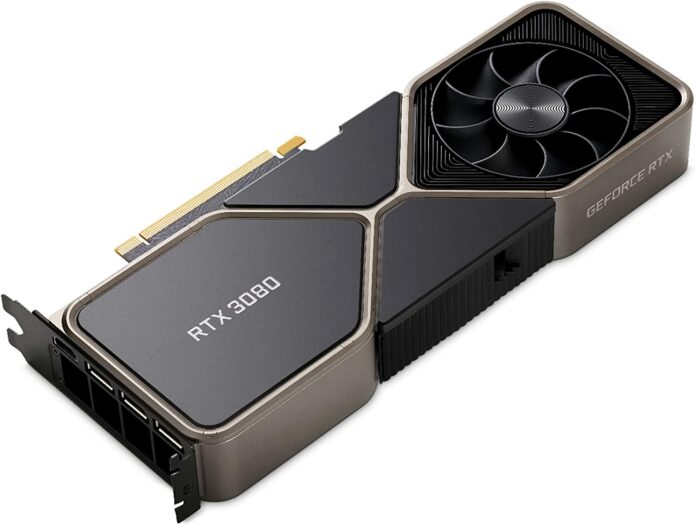CES keynotes typically detail imminent products with firm on-shelf dates. That’s the case with Nvidia’s entry-level GeForce RTX 3050 8GB and ultra-high-end GeForce RTX 3090 Ti. Team Green has announced a January 27 date for both, giving partners enough time to push cards into the channel.
Yet whispers abound of another GeForce that did not make the announcement roster. Said desktop graphics card is the GeForce RTX 3080 12GB. Doesn’t sound so different from the incumbent RTX 3080 which launched to general acclaim in September 2020, as the original model touts a 10GB framebuffer.
Differences are deeper than that, if reports are to believed.
Club386 Table of Doom™
| GPU | RTX 3080 10GB | RTX 3080 12GB | RTX 3080 Ti 12GB |
|---|---|---|---|
| Launch date | Sep 2020 | Jan 2022 | Jun 2021 |
| Codename | GA102 | GA102 | GA102 |
| Architecture | Ampere | Ampere | Ampere |
| Process (nm) | 8 | 8 | 8 |
| Transistors (bn) | 28.3 | 28.3 | 28.3 |
| Die Size (mm²) | 628.4 | 628.4 | 628.4 |
| Processors | 8,704 | 8,960 | 10,240 |
| ROPs | 96 | 112 | 112 |
| Boost Clock (MHz) | 1,710 | TBC | 1,665 |
| Peak GFLOPs | 29,768 | TBC | 34,000 |
| Memory Type | GDDR6X | GDDR6X | GDDR6X |
| Memory Size (GB) | 10 | 12 | 12 |
| Memory Clock (Mbps) | 19,000 | 19,000 | 19,000 |
| Memory Width (bits) | 320 | 384 | 384 |
| Memory Bandwidth (GB/s) | 760 | 912 | 912 |
| Power Connector (pin) | 12 | 12 | 12 |
| Board Power (watts) | 350 | 350 | 350 |
| Launch MSRP (USD) | 699 | TBC | 999 |
RTX 3080 10GB and RTX 3080 Ti 10GB, straddling the rumoured RTX 3080 12GB, provide a solid framework for evaluating the new GPU’s provenance and composition.
The same GA102 die powering all high-end GeForces is in evidence – 28.3bn transistors and 628.4mm² makes it a beast – and Nvidia delves into the mix-and-match bag with core configurations and speeds/feeds.

RTX 3080 12GB is marginally wider at the top than the regular RTX 3080 – there are an extra two GPU clusters – and therefore falls some way short of emulating the more powerful Ti variant.
Where the 12GB model scores bigger, according the rumours, is in the memory department, as it copies the arrangement of the Ti down to a tee.
Nvidia effectively takes the top-end of the regular RTX 3080 and the bottom half of the RTX 3080 Ti to produce a Frankenstein card. Makes sense, too, as this represents a simple avenue to additional segmentation. Perhaps a pre-emptive move against an unannounced Radeon card?
Ignoring noisome stock shortages and inflated pricing for a moment, this GPU ought to arrive at market armed with a $799/$850 price tag, but good luck in finding one available at that price. To that end, one can question the wisdom of releasing yet another GPU, marginally different to other models, into a market consistently starved of supply.
Source: WCCFTech.

